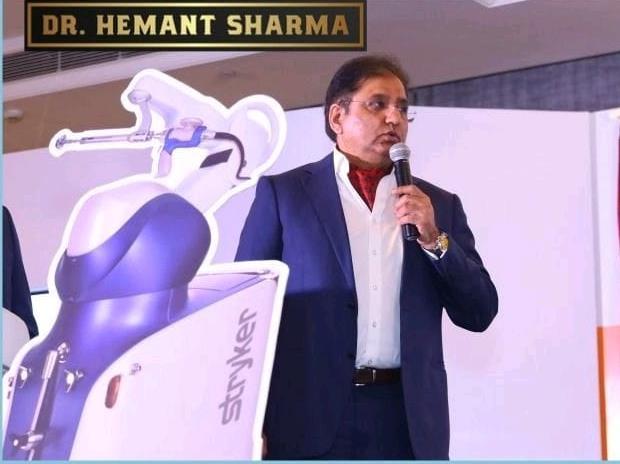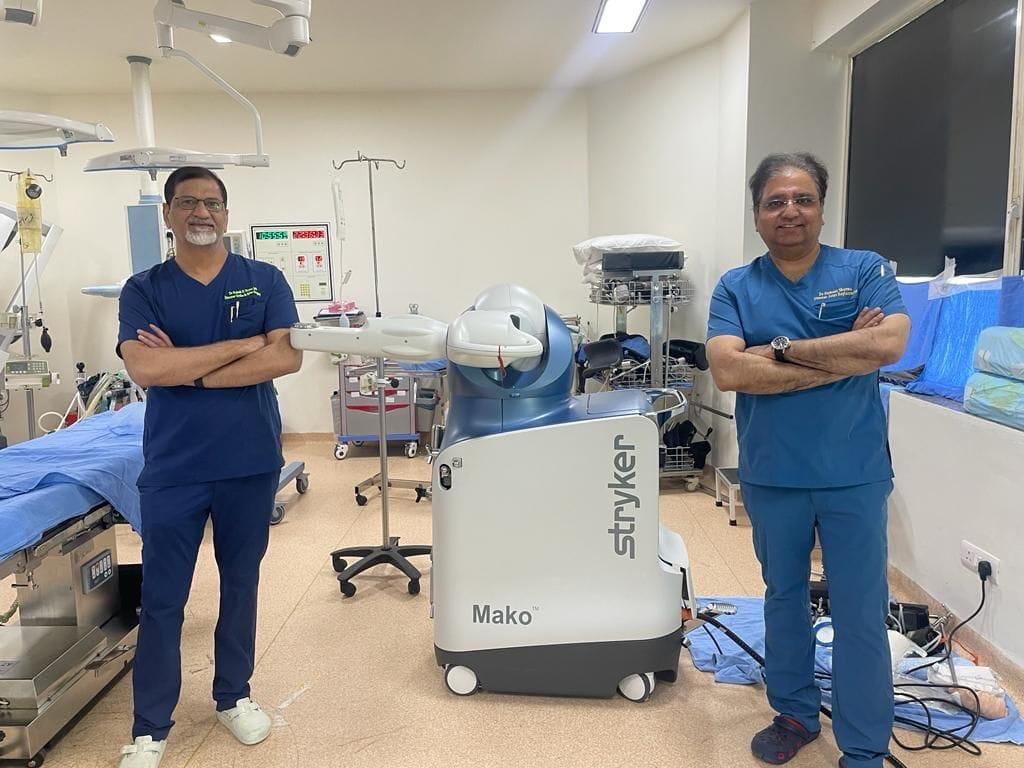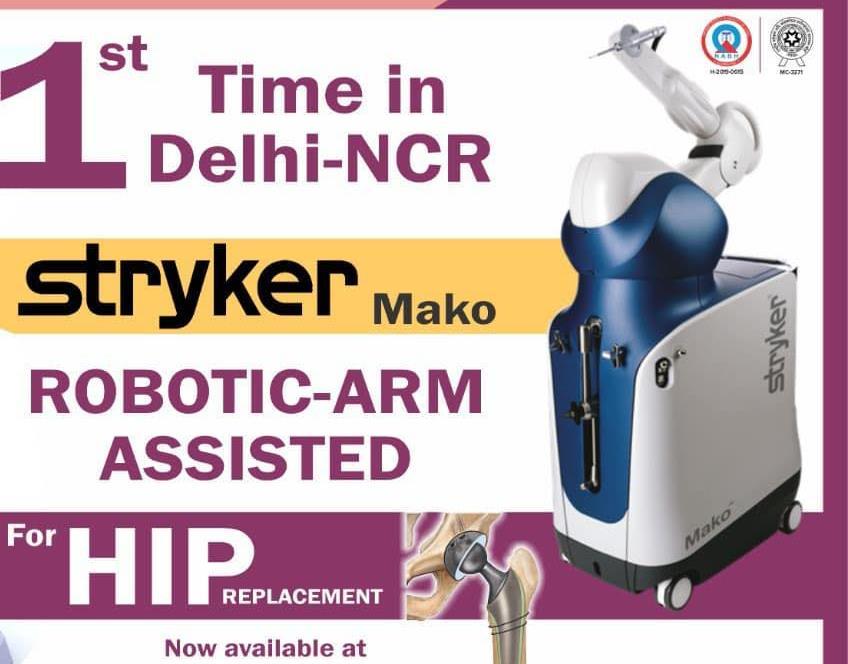Demystifying Myths about RoboticArm assisted Knee Replacement
Robotics has taken the world by storm.
Although it has been medical field for over 3 decades, in the last few years it has become the talk of the town, predominantly in surgical space. From making significant contributions in India’s healthcare infrastructure to assisting healthcare professionals to provide advanced healthcare solutions, robotics is transforming lives of both surgeons and patients.

Myth 1: The robot independently performs the surgery; the surgeon just feeds in data.
No, this is not true. In a robotic-arm assisted knee replacement, the robotic arm only assists the surgeon to perform the surgery with precision. With the surgical instruments connected to the robotic arm, Mako technology allows surgeons to reproduce precise bone cuts and implant alignment for patients, every single time. Without the surgeon guiding the roboticarm, it cannot either move or make decisions on its own.

Myth 2: All robotic technologies are the same.
Yes, there are various robotic technologies available in the market, however each technology is different from the other. It is important to know the clinical history of the technology before opting for robotics surgery. It can be ensured by checking FDA approval, clinical legacy and worldwide installs and surgeries performed with the technology.

Myth 3: Conventional surgery is better as surgeons can see better with their own eyes
In a traditional knee replacement, the surgeon relies on conventional tools and on the surgeon’s skill and expertise to estimate the alignment using specialized surgical instruments. The surgical planning is done right on the operating table. However, with robotic-arm assisted surgery the surgeon does this planning even before entering the OT with help of patient specific 3D CT-based virtual plan. It allows visualization of patient’s anatomy including osteophytes, cysts and bone defects, prior to surgery.

